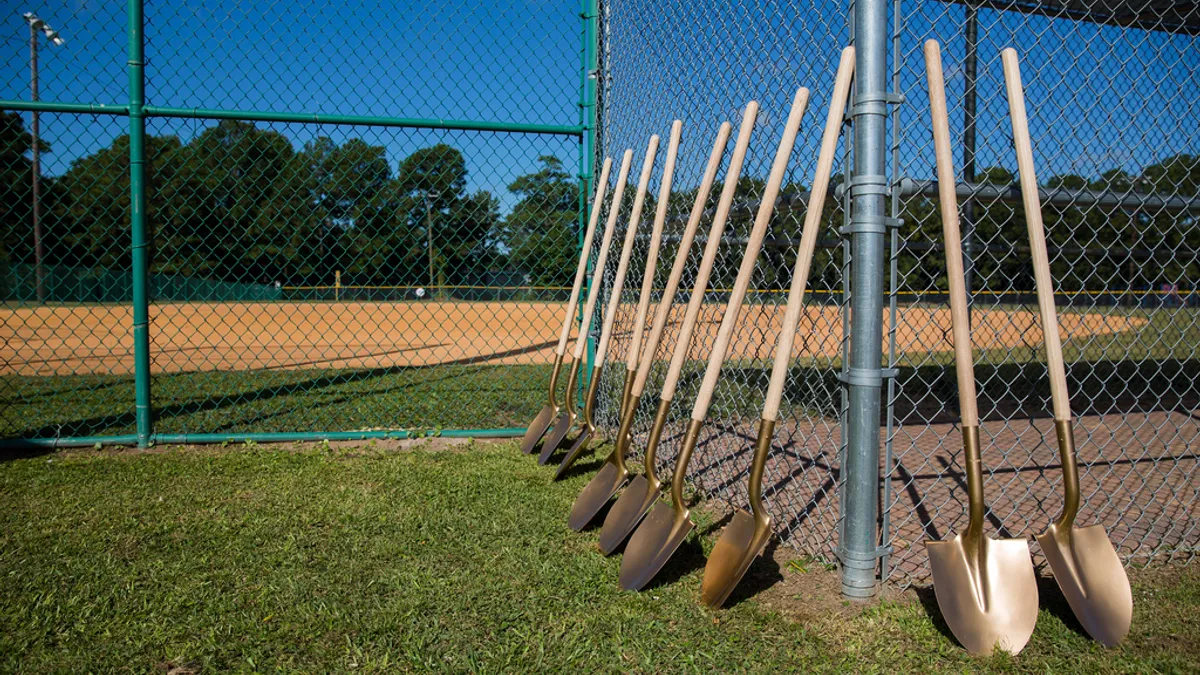Dive Brief:
-
California lawmakers have agreed on the terms of a $15 billion construction bond program that will now go before state voters in March. The money would go toward public preschool, K-12 and higher education construction and modernization projects.
-
If approved by voters, the lion's share of the funding — $9 billion — will be used for preschool and K-12 projects: $2.8 billion for new construction; $5.2 billion for modernization; $500 million for charter schools; and $500 million for career technical schools. The University of California and the system's Hastings College of the Law in San Francisco will be able to tap into $2 billion, as will California State University facilities and the California Community Colleges system.
-
The state's General Services Department will prioritize projects for facilities that have posed health or life safety hazards, followed by those proposed by school districts with financial hardships; school facilities that have concerns with lead in water; projects that have been waiting for approval for two quarters; and new construction or modernization projects that will ease overcrowding.
Dive Insight:
If voters approve the legislation next year, that's good news for the California contractors that specialize in school construction, but it has also raised questions from some about the role that project labor agreements (PLAs) play in the measure.
In Section 17070.56(a)(2) of the bill, within each priority category, those projects that use a PLA will be given first consideration. So, for example, if there are 10 projects that are meant to deal with some health or safety hazard, the projects that use a PLA will be given priority over the others.
In a Sept. 14 bill analysis, the Western Electrical Contractors Association (WECA) called the legislature's decision to incentivize PLA's "inappropriate."
"WECA thinks this will become a rallying cry for PLA supporters who will tout that a PLA 'increases your odds of receiving state funds,'" the organization said in its comments to legislators. "WECA is disappointed you have decided to incorporate this special interest provision in this critical funding measure. WECA suspects you did so to obtain the support of the State Building and Construction Trades Council."
Some opposed to PLAs claim that trade unions in California force developers into using PLAs with the threat of "greenmailing," which refers to the act of tying up projects with spurious environmental protests and lawsuits with the express purpose of causing costly delays.
In general, under the California Environmental Quality Act (CEQA), any group or individual can file a lawsuit against a project claiming that its environmental review was deficient. In 2016 and 2017, advocacy groups opposed to the Golden State Warriors' decision to locate its new $1 billion Chase Arena complex near hospitals and other medical facilities were able to delay construction through a series of lawsuits, postponing the team's opening season at the new facility by a year. The Warriors eventually won in court, and the Chase Center opened last month.
But the debate around PLAs is nothing new. The collective bargaining agreements between trade unions and owners designate hourly pay rates, benefits, how labor disputes will be resolved and a host of other working and hiring conditions. Although trade unions typically represent labor in these agreements, they generally don't prevent both union and nonunion contractors and workers from participating in the project.
The elements of a PLA that turn the conversation into a contentious one usually revolve around prevailing wages that even non-union contractors must pay or other conditions that force nonunion contractors to operate outside their norm, like requirements that they hire through the local union or ensure their workers complete union-sponsored training.
From a union standpoint, however, PLAs guarantee that workers make a good wage and benefits and don't fall prey to labor brokers or others who might exploit them.














